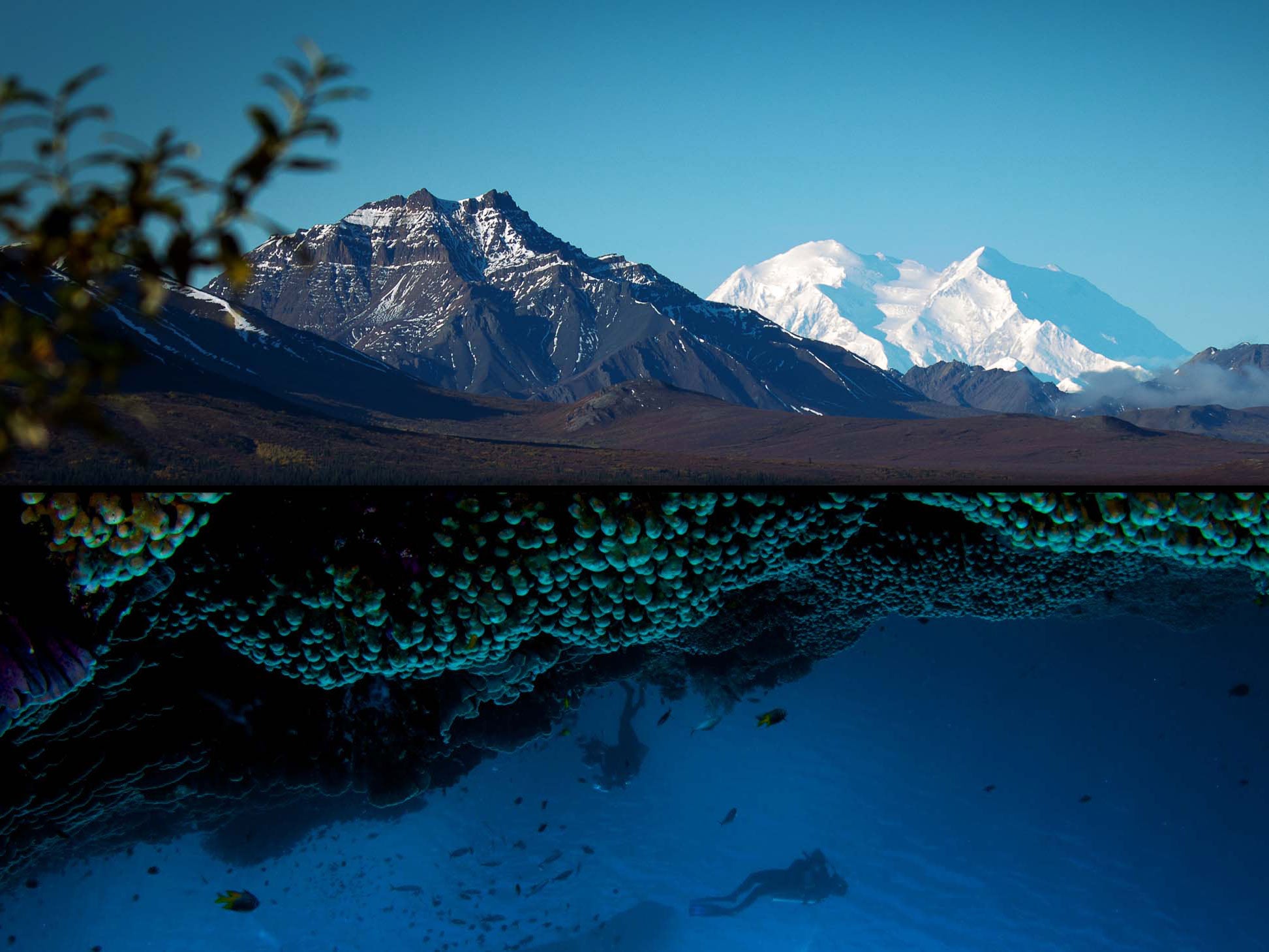By Steve Miller
The biggest thing I think I was doing wrong in the early days was using the wrong equipment. So if I could go back in time and give myself some advice, it would be about lenses, it would be about focal lengths, and about distance to your subject. And then just a little bit of a better understanding about light. It was very mysterious to me in the beginning the relationship between natural light and strobe light.

Using the wrong lens can make it difficult or impossible to get the right shot underwater. Telephoto and super-zoom lenses are amazing topside but a nightmare below the surface.
It's a funny thing because there's some key points that will take my photography from terrible to very nice and I could have condensed it into a 30-minute lesson. And I turned it in to a 10 or 15 year adventure. Because you don't get to do that many dive trips. That's part of the problem with underwater, because if you're not shooting topside in the first place then how often do you get to practice? For me in the beginning it was once a year on an island trip. I would have so many things moving through my mind that I would waste a lot of time doing the wrong thing.
There aren't that many things that you have to keep in mind. Once you understand the light and exposure and how things are going to react underwater there's not really that much to keep track of.

In most cases it's necessary to balance ambient light with strobe light to get the pop of color we're looking for underwater. Once you understand the difference between foreground exposure (strobe light) and background exposure (ambient light), suddenly you'll be photographing a whole different world.
The key is knowing what you want before it happens. If you have an image in your mind's eye before you enter the water, then you can be very clear and very certain about how you're going to get that image. You know what lens you're going to need and what settings you're going to need. Carrying the image with you before you get in the water makes the difference compared to someone who just enjoys getting snapshots of their dive.
If you look at published images, images that are really strong that print beautifully and large, and you ask the photographer I think they'll say "Yeah, I spent half the dive on that image."
Wondering where to start? Check out our Cheat Sheets section for quick camera and strobe settings and our Customer Photos section for inspiration.
 Ambassador Steve Miller has been a passionate teacher of underwater photography since 1980. In addition to creating aspirational photos as an ambassador, he leads the Ikelite Photo School, conducts equipment testing, contributes content and photography, represents us at dive shows and events, provides one-on-one photo advice to customers, and participates in product research and development. Steve also works as a Guest Experience Manager for the Wakatobi Dive Resort in Indonesia. In his "free" time he busies himself tweaking his very own Backyard Underwater Photo Studio which he's built for testing equipment and techniques. Read more...
Ambassador Steve Miller has been a passionate teacher of underwater photography since 1980. In addition to creating aspirational photos as an ambassador, he leads the Ikelite Photo School, conducts equipment testing, contributes content and photography, represents us at dive shows and events, provides one-on-one photo advice to customers, and participates in product research and development. Steve also works as a Guest Experience Manager for the Wakatobi Dive Resort in Indonesia. In his "free" time he busies himself tweaking his very own Backyard Underwater Photo Studio which he's built for testing equipment and techniques. Read more...
Additional Reading
Hit the Water with a Shot in Mind | A Steve Miller Meditation
When to Change Aperture Undewater
When to Change Shutter Speed Underwater
The Right Lens for Every Situation Underwater
Why You Need Strobes Underwater
David Fleetham's Tips on Housing Assembly & Maintenance
Jenna Martin's TEDx on Becoming an Underwater Portrait Photographer











![What I Wish I Knew When I Started in Underwater Photography [VIDEO]](http://www.ikelite.com/cdn/shop/articles/what-i-wish-i-knew_10872ac2-9104-4942-a4cf-eda88d0fcb39.jpg?v=1643998370&width=1500)
![The Importance of Hitting the Water with a Shot in Mind [VIDEO]](http://www.ikelite.com/cdn/shop/articles/having-a-shot-in-mind.jpg?v=1643913319&width=2048)
